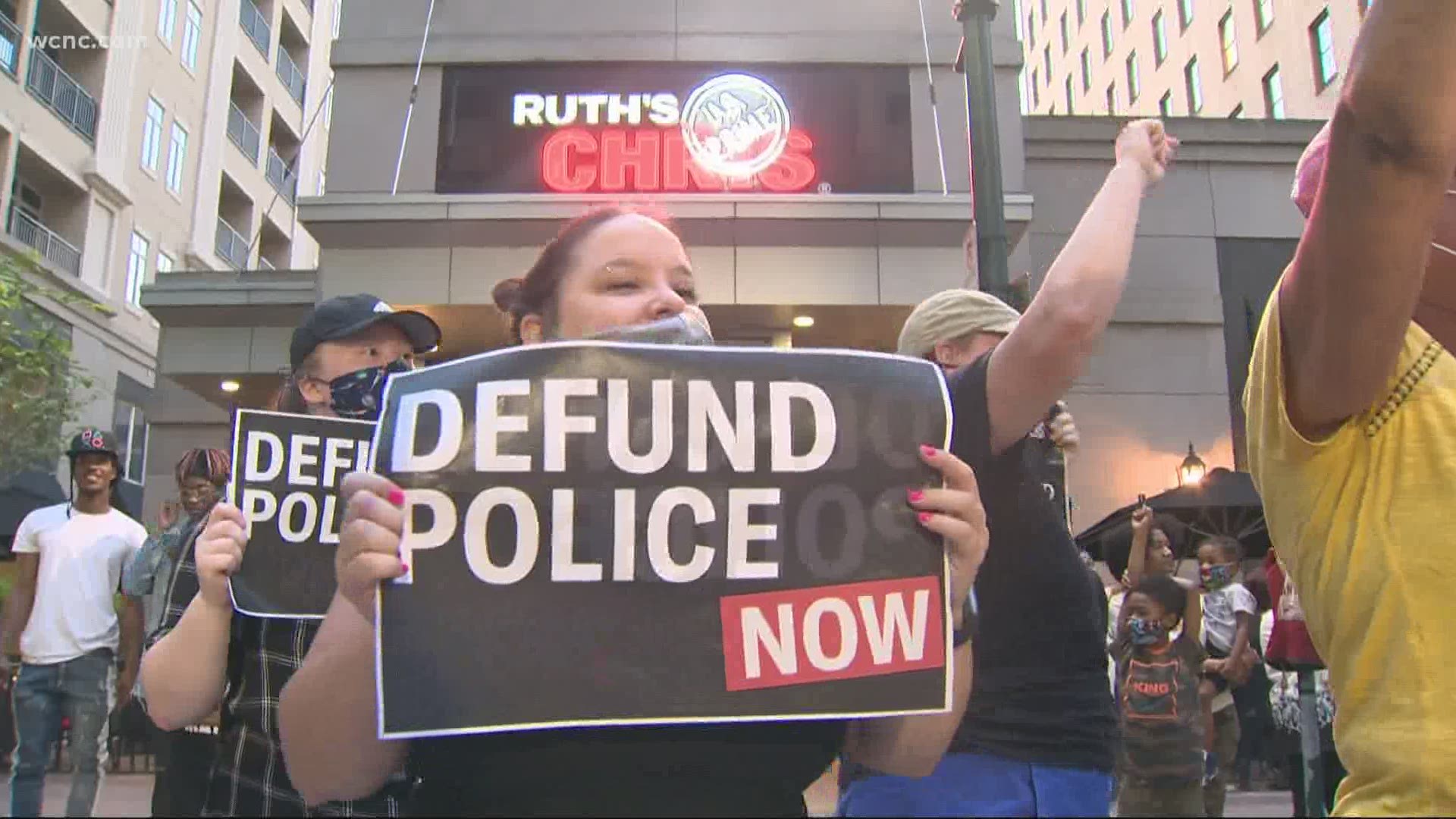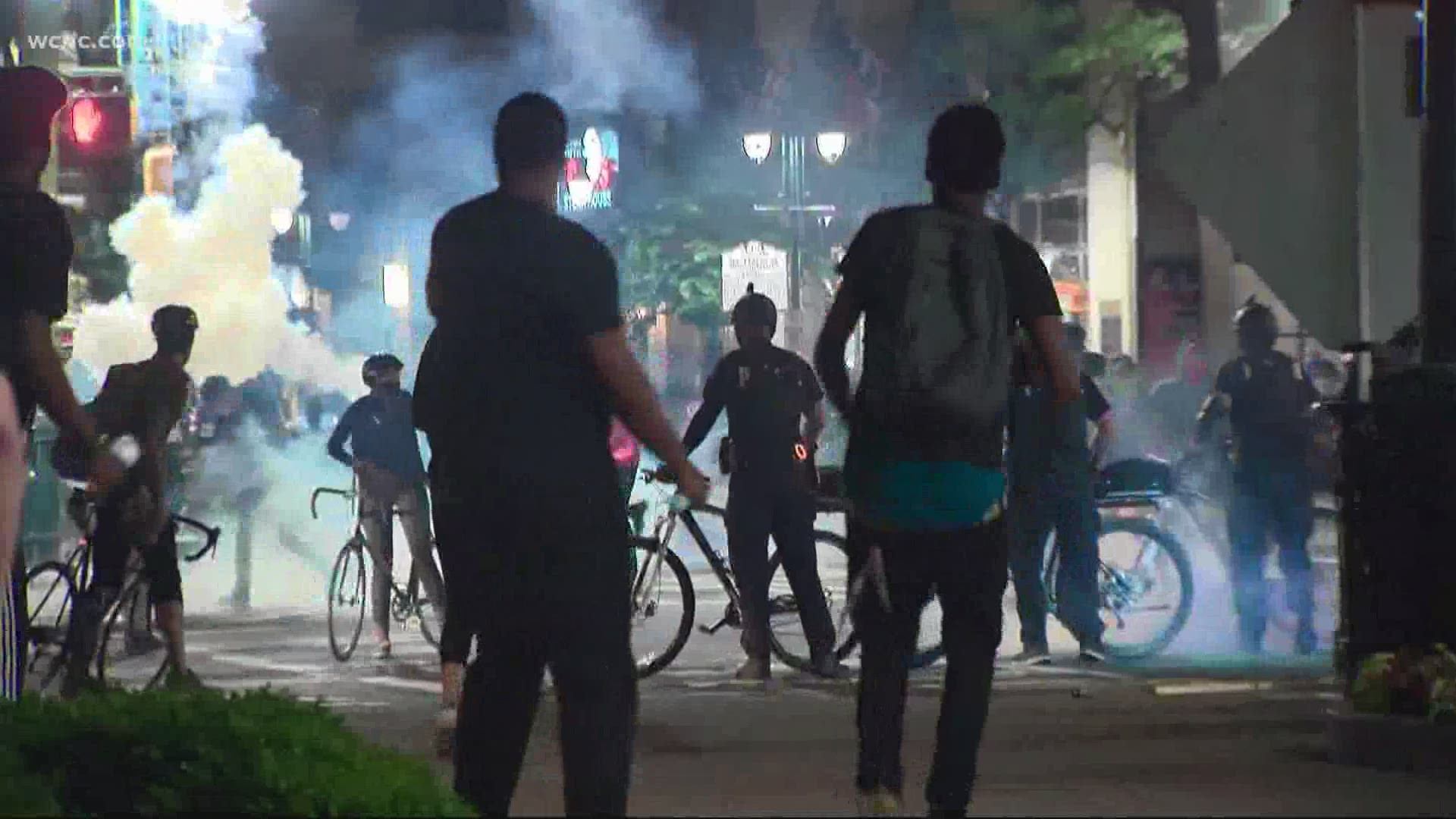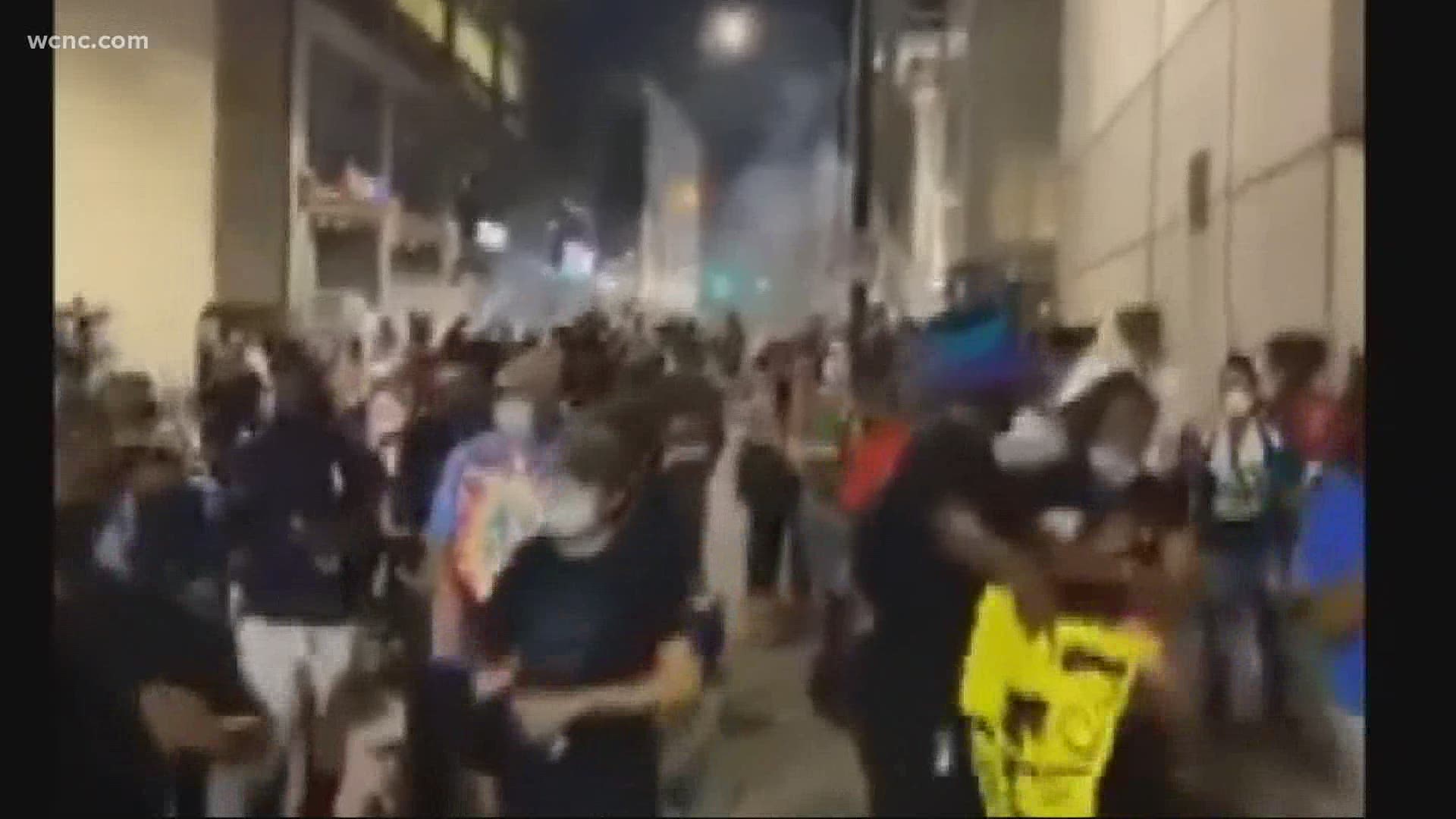CHARLOTTE, N.C. — The Charlotte NAACP is among those suing the Charlotte-Mecklenburg Police Department over a June 2 incident on Fourth Street that seemingly trapped protesters between deployed chemical agents.
A Mecklenburg County judge has issued a temporary restraining order limiting CMPD's use of riot control agents during peaceful protests, CMPD confirmed Friday. The restraining order was issued after a lawsuit claimed the police department used excessive force on peaceful protesters earlier this month.
On Sunday, CMPD issued a clarification from their initial statement that said "although not explicitly listed, the Order does not prevent the Department from deploying riot control agents in gatherings that involve protesters who are damaging the property of others."
CMPD's initial statement read:
"Many of the restrictions referenced in the order are currently prohibited under CMPD policy," the department said in a released response. "The order does however prevent the department from deploying riot control agents in gatherings that involve protesters who are damaging the property of others."
Riot-control, chemical agents include smoke and pepper spray, which have been used by police departments across the country during protests following the death of George Floyd in Minneapolis.
Video appeared to show protesters trapped between deployed chemical agents
"Protesters who were attacked by Charlotte-Mecklenburg law enforcement during a peaceful protest against police brutality, sued the city of Charlotte and Charlotte-Mecklenburg Police Chief Kerr Putney [Friday] for violating their state constitutional rights," reads a joint statement issued Friday by the groups involved in the lawsuit.
The lawsuit accuses Putney of organizing a formal plan to end peaceful protests with a "deliberate show of force in an apparent frustration that the protests would not cease."
In question are actions taken by CMPD on June 2 along Fourth Street in uptown Charlotte.
Facebook Live video recorded by Charlotte Nerve, one of the organizations involved in the lawsuit, showed protesters becoming seemingly trapped between two lines of police officers deploying riot control agents.
"There was no pre-planed operation by CMPD command, the emergency management officer, or anyone else to use officers to block protesters or box them in," CMPD Deputy Chief Jeffrey Estes said Friday during a virtual news conference.
Incident investigated by the state
Both CMPD and the North Carolina State Bureau of Investigations (SBI) were independently reviewing the incident.
Estes announced Friday the SBI had concluded their investigations and sent their findings to CMPD last week. Estes said those findings would be released next week but they were later sent out by CMPD.
In the findings, state investigators reviewed surveillance cameras of the incident and determined protesters had two exits to escape the riot control agents.
Videos from those cameras have not been released as of Friday night.
Social media video recorded that night showed protesters breaking into a closed parking garage in order to escape chemical agents.
Estes said the SBI findings supports their argument the operation was not planned ahead of time. He said recorded radio communication shows officers had intended to leave protesters an exit.
Police radio communications from that evening, and other nights of protests, have not been heard publicly because the department was using encrypted, secure transmissions impossible to receive on commercial available radio scanners.
NAACP joins lawsuit against Charlotte Mecklenburg Police Department
"Over the last three to four weeks, the Charlotte-Mecklenburg Police Department has a new low for police-citizen encounters," said Elizabeth Haddix, managing attorney for the Lawyers' Committee for Civil Rights Under Law, which representatives the organizations suing. "Peaceful protests are hallmarks of our democracy, yet the violent actions of the CMPD undermine the established tradition that none of our rights end simply because law enforcement shows up at a scene."
The groups suing include: the Charlotte and Mecklenburg County chapter of the NAACP, Nerve Media Productions, American Civil Liberties Union of North Carolina, Team TruBlue, Charlotte Uprising, and the Southeast Asian Coalition.
CMPD chief responds
In a virtual news conference earlier this month, Putney would not disclose exactly what types of riot control agents his officers used by said pepper balls and tear gas are common examples.
“That video is disturbing. No two ways about it,” Putney said the following day. “And the other thing I need you to know is there are a lot of other angles and videos and perspectives that you need to see."
Putney had promised to release some of that video pending the conclusion of the investigations. CMPD said Friday their internal investigation is still ongoing.
"We will be as transparent as absolutely possible but more importantly hold all of ourselves accountable if laws have been violated there will be accountability," Putney promised earlier this month.
Justin LaFrancois recorded the video for Queen City Nerve, an alternative newspaper. He was streaming live on Facebook when protesters were confronted by the chemical agents on June 2.
"It’s suffocating, you feel like you're going to die, it's like you're swallowing bleach,” LaFrancois told WCNC Charlotte earlier this month. “What happened was essentially inhumane, unethical, treatment of protesters exercising their First Amendment rights.”
City council votes to defund
Less than a week later, the Charlotte City Council voted to defund CMPD's budgetary request to buy additional stock of control agents in their 2021 budget.
Friday's temporary restraining order, in part, will limit the department's tactical response options during any ongoing protests over police brutality or racial disparities.
RELATED: CDC: Tear gas can cause blindness, death with long-lasting exposure, especially in closed settings



